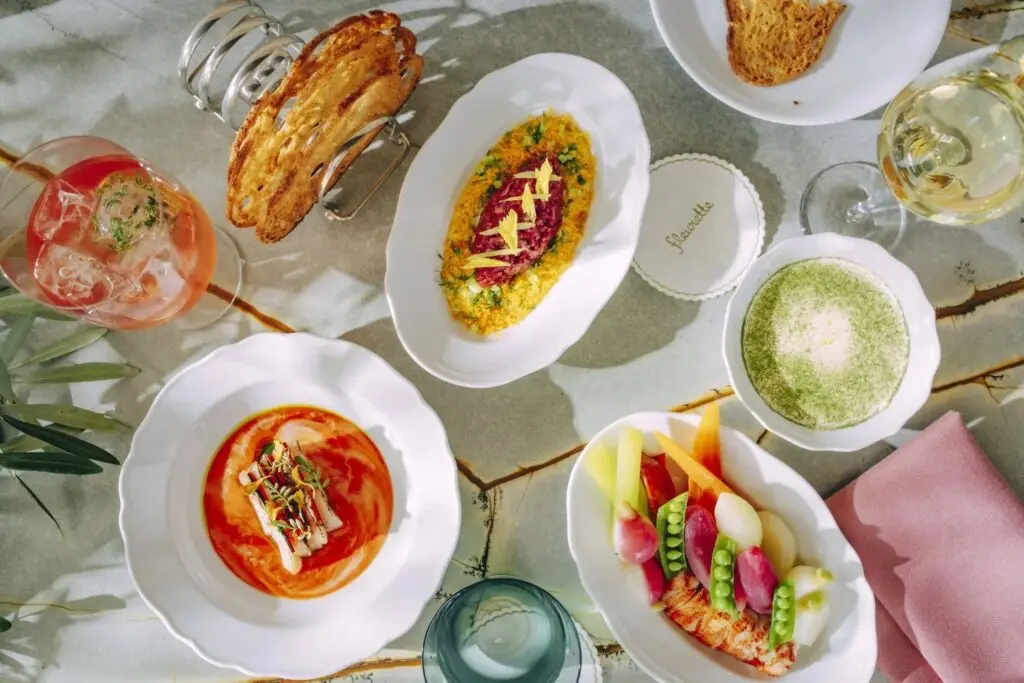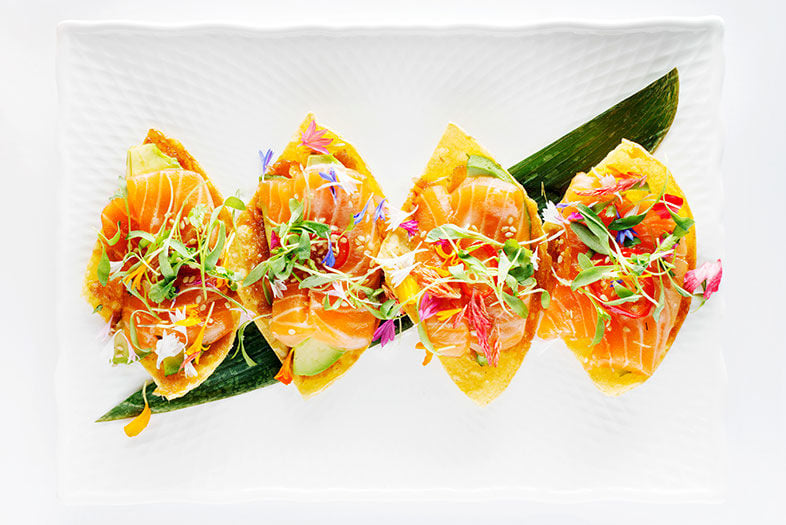Cloak & Petal
1953 India Street, Little Italy
BEST DISHES
Abalone Butter Sauté
Salmon Tostada
Glazed Duck Breast
Those fake trees are beautiful. Look at them, “blooming” with their ghost-pink cherry blossoms. I’d pay to eat microwaved corn dogs in their shade. Walking along the corner of India and Grape streets, it’s impossible to miss the flowery spectacle. Show-off.
The average response from passersby, as I witnessed and imagined their inner monologue, goes something like: Whoa. What is that sexy nature thing? Why is it growing inside a building? I need to be near it.
Once inside, you’ll notice the black lacquer on the branches and trunks, and realize they’re made of synthetic material. You won’t care. It’s so pretty. You’re gonna stay awhile.
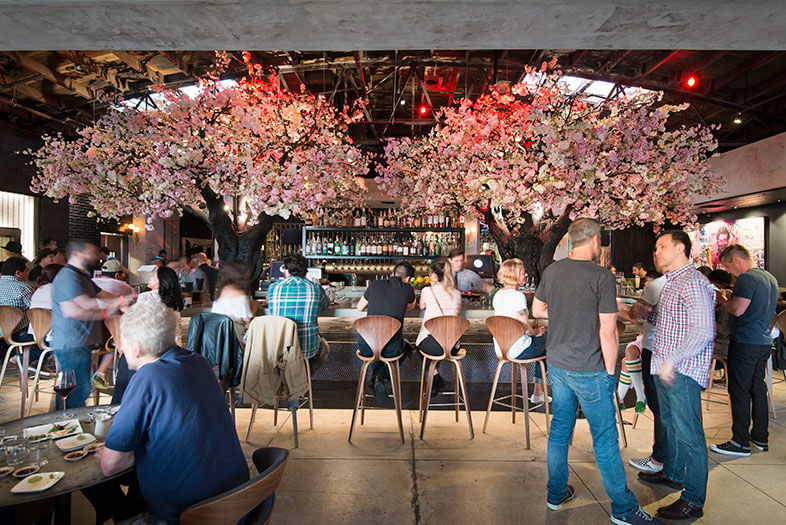
How Japanese Fusion Stacks up at Little Italy’s Cloak & Petal
When you do, I hope Cloak & Petal’s food lives up to its trees. Unfortunately, it didn’t for us. Maybe our expectations were too high. The owners previously created Tajima, my favorite ramen restaurant in town. This is a new venture for them—high-end Japanese/Californian/French/everything cuisine—on Little Italy’s main drag, the hottest street in San Diego food. Every ambitious restaurateur wants to take a shot at Little Italy.
Let’s start with the positives. Cloak & Petal is basically giving away quality sushi. Rent on India Street isn’t cheap. Landlords demand lots of cash, though they may consider offers of human sacrifice. So how is C&P selling a 16-piece sushi platter for only $28? We point it out to our server, and she thinks it may be a typo. She asks her manager. He assures her it is not a typo.
Even at health-hazardous sushi joints, you’re paying around $2 for every piece of nigiri. I know low-rent fish when I taste it, and C&P’s sushi is quality. For an additional $8, you can upgrade to the belly cuts (the fattier part, the best part, always more expensive). That means 16 pieces of belly sushi for $36. Nobu charges $9 for one piece of salmon belly. No matter which way I do the math, it seems C&P is running a philanthropic sushi operation.
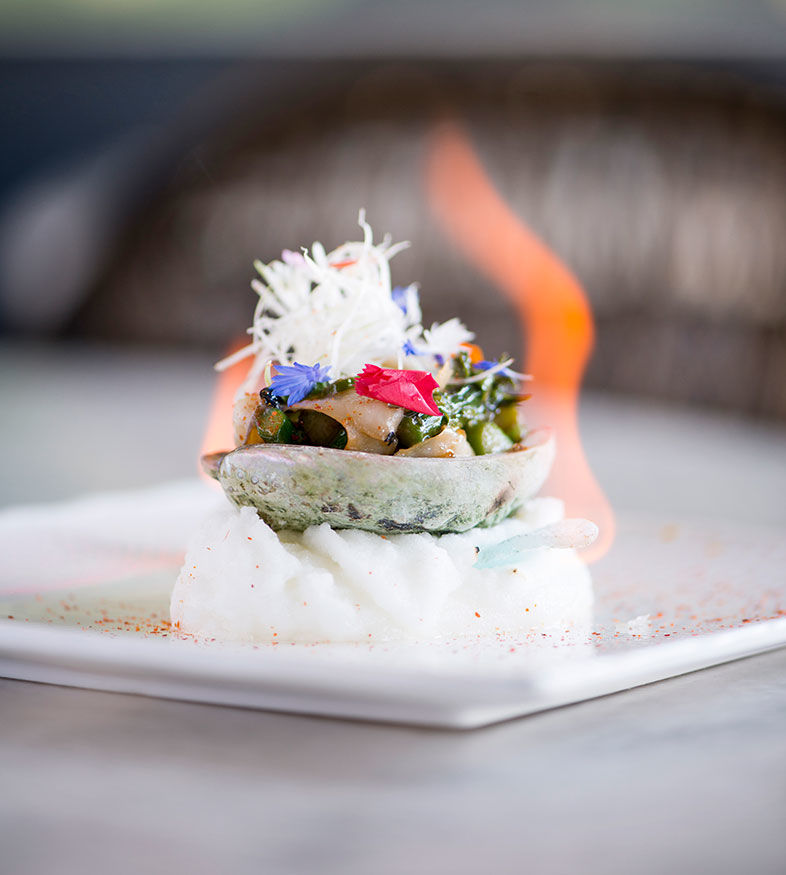
How Japanese Fusion Stacks up at Little Italy’s Cloak & Petal
Abalone butter sauté with garlic, asparagus, sake, and scallions
Maybe they’re making up for it in liquor. The bar is the sugar daddy of restaurants. Food may bring people in, but booze pays the bills. The drinks at C&P are decent. They have a respectable selection of Japanese whiskeys, which are exciting to drink neat, or on a rock or two. Or in their Japanese to English cocktail, a riff on the Manhattan with sesame-infused Iwai whiskey and amaro. Their Caribbean-inspired cocktails, though, take the vacation-in-a-glass too far. Tiki cocktails are en vogue right now. But America’s first tiki movement was ruined by bartenders who went full diabetes, zero balance. C&P needs to soul-search on those. Their other drinks, however, are well-balanced and innovative (the Cloak Cup Julep has pisco, lavender, reposado tequila, persimmon, almond, and mint).
Our second night at C&P, a man walks past the front door and tells his companion, “Cloak & Petal? It’s okay, if you want to pay $50 for wagyu beef.”
After that ominous summation, we’re happy to discover that the wagyu flat iron steak is only $25. But we’re sad that ours is overcooked. Just about the only way to ruin wagyu is to overcook it. Ideally, you sear the exterior to intensify the flavor and leave the interior as pink as blushing lips. The restaurant and customer are paying high dollar for this luxurious meat, and the closer it gets to medium, the closer it gets to Quarter Pounder. That said, the light ponzu paste served with it is delicious, the right alchemy of soy, seaweed, and dried tuna. That’s where the Tajima roots shine through, in traditional Japanese condiments.
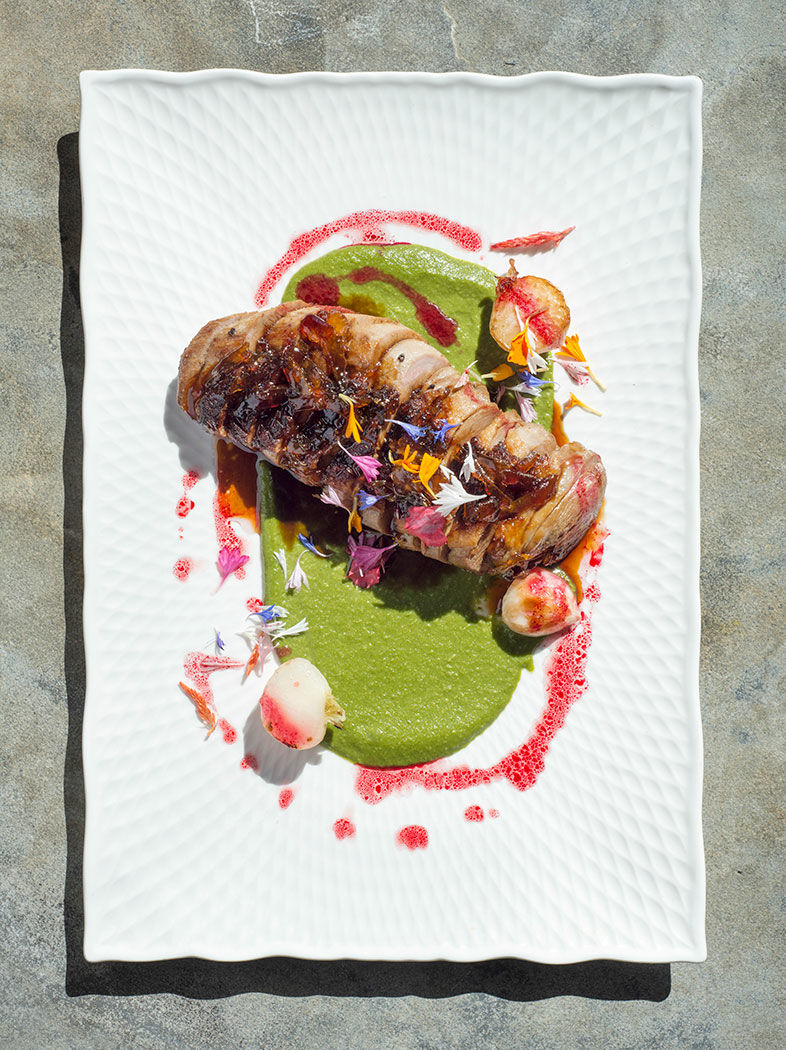
How Japanese Fusion Stacks up at Little Italy’s Cloak & Petal
Glazed duck breast in a yuzu marmalade
We order the bone marrow and uni special to see how they handle another dish that lives or dies by its ingredients. And—it’s underseasoned. I can empathize with a chef not wanting to bury superior ingredients like uni or bone marrow under fistfuls of salt. But even truffles discovered by the best truffle dog in Piedmont, at the peak of truffle season, immediately shaved and tossed into an Italian grandmother’s pasta… need to be seasoned. Raw ingredients are inherently monaural. Seasoning multiplies their flavors into stereo.
We do find some good, even great items on the C&P menu. The salmon tostada, for example. Fresh raw salmon is laid atop a wonton chip with caramelized onions, truffle-soy reduction, lemon, and chiles. Be sure to dip it in the soy sauce automatically supplied to your table. The duck is also very nice in its sweet yuzu marmalade, which balances the meat’s intense flavor (when someone says “gamy,” I hear “delicious”). Duck fat is tricky. Done well, it melts on the tongue and floods your mouth with flavor. Not rendered correctly, it’s a pencil eraser. Cloak & Petal’s is not an eraser. It’s pretty great. Their hamachi crudo, served in a soup of ponzu and yuzu citrus, looks like it’ll be oversaturated, but it’s perfectly flavorful with cilantro and jalapeño up top.
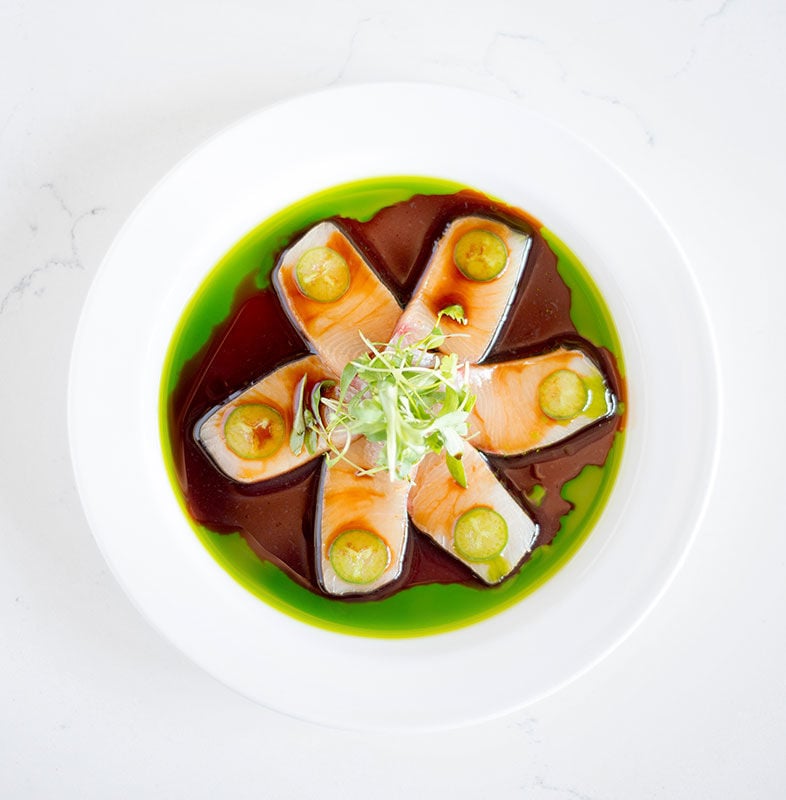
How Japanese Fusion Stacks up at Little Italy’s Cloak & Petal
Yellowtail hamachi topped with jalapeño
They also have a good, delicate touch with abalone. Abalone is one of the toughest seafoods to do right. At two minutes, it’s perfectly cooked. At two minutes and one second, it’s overcooked. Theirs is just right, tender and tossed with chopped asparagus, garlic, sake, and scallions. Served in-shell, it rests atop a “salt cloud,” as our server describes it, which has been doused in brandy and set aflame for the hell of it. Food should be fun. Play with your food.
As the abalone shows, Cloak & Petal excels at showmanship. From the tinfoil-looking wallpaper to those come-hither cherry blossoms, art is clearly their favorite child. Unfortunately, food is the kid they occasionally forget at the grocery store. A perfect example is the elk “sashimi.” It’s essentially carpaccio, thin slices seared on the edges and rare-plus on the inside with a wisp of lemongrass. Put lemongrass on my taxes and I’d eat them. It’s a tastefully minimalist expression of the light red meat. Problem is, they sprinkle salt all over the long black plate, which makes it look great—you’ll want to take a picture—but, as diners, we’re taught that everything on the plate is meant to be used. We conclude that the chef didn’t fully salt the elk on purpose and is providing this sodium storm for us to finish the job. So we cautiously drag those elk slices through it and—oh lord. We pucker. We would both steal a child’s water. It’s too much. I start to realize some ingredients may just be here for the Instagram.
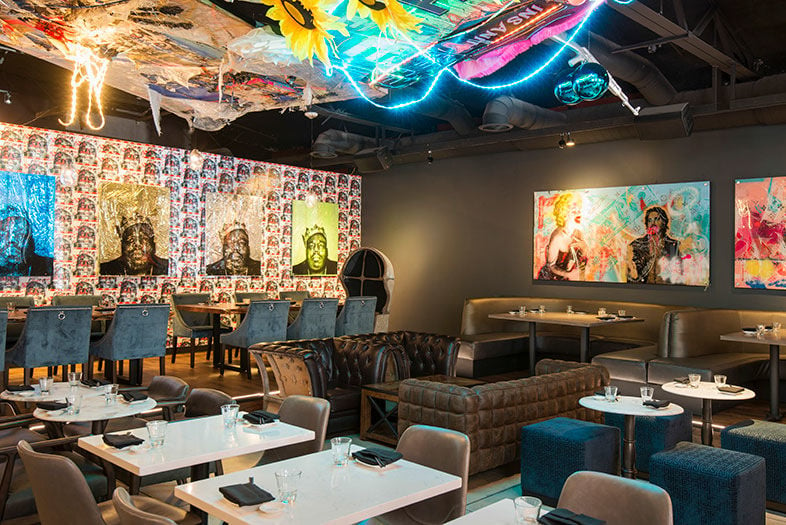
How Japanese Fusion Stacks up at Little Italy’s Cloak & Petal
Our server suggests the barbecue lettuce cups and we listen. The marinated rib eye arrives unevenly cooked. The fat has been overly rendered or trimmed. When fat disappears, it takes flavor with it. The dish also needs an acid (it comes with a garlic-chive kimchi, but it’s not punchy enough), and a moisture beyond the light vinaigrette (Ponzu? Miso? Okonomi?). It’s dry and one-dimensional.
I’d heard good things about the shishito pepper poppers. They sounded like a fun riff on Super Bowl party food. But the tempura we get lacks any sort of browning. You don’t want tempura dark, but it should be lightly browned to maximize flavor and fully cook its contents. Ours looks like someone pulled it out of the fryer too early. The crab mixture inside needs seasoning. The green tea salt served in a small pile on the plate is interesting, and creative, but it’s the only seasoning we get. I eventually sprinkle the entire pile over the peppers to make them come alive.
Late in my second visit—largely disappointed by the food, aside from a few bolts of inspiration—I try to understand what’s special about this place. There is something intoxicating. I gaze at a piece of art in the main dining room. It’s a giant phrase that includes the F-word. People have talked about this, questioned its appropriateness. Cuss words aren’t art. My seven-year-old already knows them from the playground. But I am intrigued by a restaurant that’s willing to buck decency norms. Not too many businesses have that gall. The F-word isn’t “it.” But it’s part of it. That and the trees. And the Biggie Smalls portraits all over the back room unapologetically setting the tone, and suggesting the demographic.
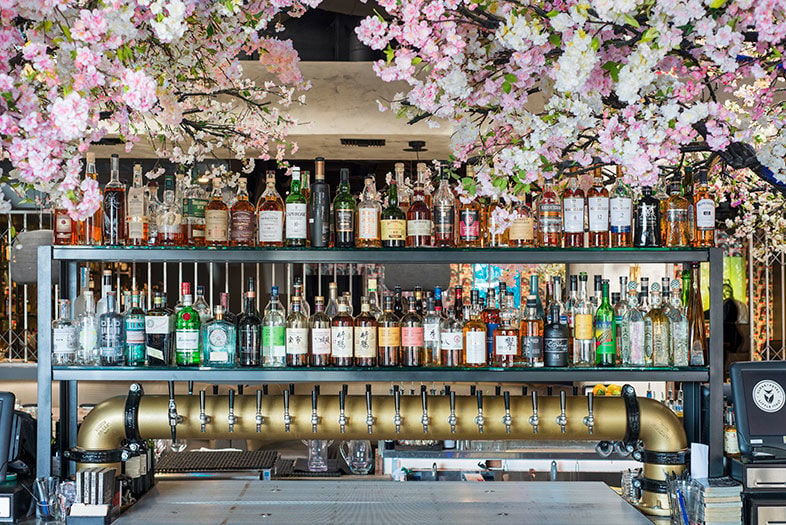
How Japanese Fusion Stacks up at Little Italy’s Cloak & Petal
My dad probably wouldn’t jibe with this place. That’s okay.
While we’re deeply contemplating who won the East/West rap battle, a pork belly arrives in a broth. Our server had suggested we get a side of rice with it. Great advice. The dish would’ve been incomplete without it. The menu said it included “spicy mustard,” but it’s hard to find. The luscious meat doesn’t seem to be tweaked in any way with a marinade or braise. It just tastes like pork belly, barely fulfilling its basal promise as the fattiest cut of a delicious meat.
None of these dishes are awful. They’re just frustrating shrugs.
Cloak & Petal is one of the more attractive and disappointing restaurants I’ve experienced in a while. I have faith in the Tajima group. They make one hell of a ramen. If you can create a tasty broth, you know how to develop things over time. Hopefully they can do that with C&P’s kitchen. For now, the art and bar will have to take the lead.
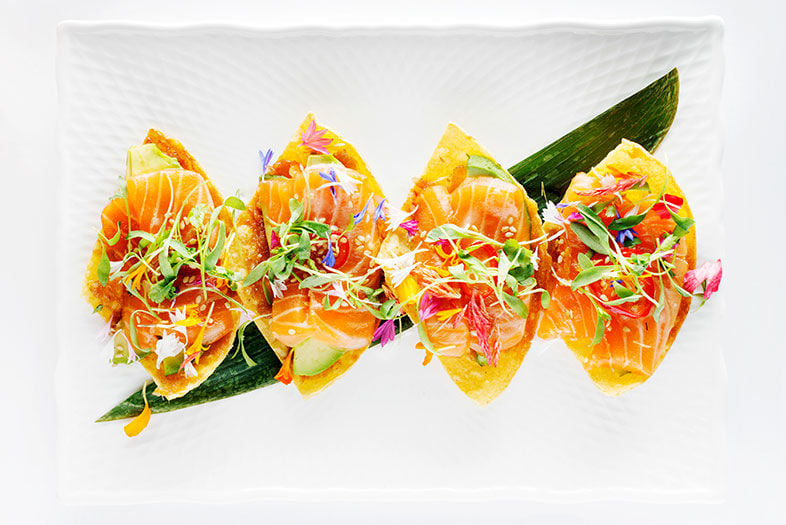
How Japanese Fusion Stacks up at Little Italy’s Cloak & Petal
PARTNER CONTENT
Salmon Tostada


